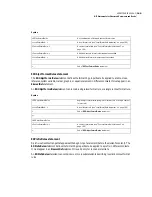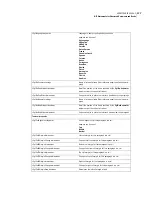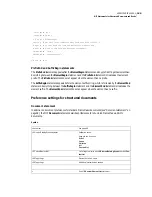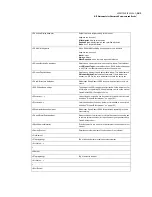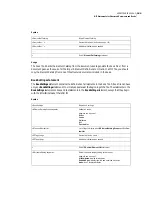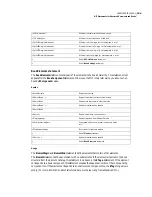
180
ADOBE FRAMEMAKER 6.0
MIF Statements for Structured Documents and Books
<Collapsed No >
<SpecialCase No >
> # end of ElementBegin
<String `Light rail lures commuters away from rush hour traffic.'>
# Again, note that both the Item and Bulletlist elements end
# before the end of the Para and ParaLine statements.
<ElementEnd `Item'>
<ElementEnd `UnorderedList'>
>
> # end of Para
PrefixEnd and SuffixBegin statements
The
PrefixEnd
statement appears after the
ElementBegin
statement and any prefix strings the element has.
Everything between the
ElementBegin
statement and the
PrefixEnd
statement is treated as the element
prefix. The
PrefixEnd
statement does not appear when the element has no prefix.
The
SuffixBegin
statement appears before the element suffix string, which is followed by the
ElementEnd
statement. Everything between the
SuffixBegin
statement and the
ElementEnd
statement is treated as the
element suffix. The
ElementEnd
statement does not appear when the element has no suffix.
Preference settings for structured documents
Document statement
In addition to document preferences for standard FrameMaker documents (see “Document statement” on
page 98), the MIF
Document
statement describes preferences for structured FraSGML
documents.
Syntax
<Document
See page 98
<DElementCatalogScope
keyword
>
Validation scope
keyword
can be one of:
Strict
Loose
Children
All
CustomList
<DCustomElementList
List of tags to display when
DElementCatalogScope
specifies
Cus-
tomList
<EDTag
string
>
Element definition name
<EDTag
string
>
Additional statements as needed
…
>
End of
DCustomElementList
statement
Summary of Contents for FRAMEMAKER 6.0
Page 1: ...MIF Reference Online Manual FrameMaker 6 0 Adobe ...
Page 15: ...15 ADOBE FRAMEMAKER 6 0 Introduction ...
Page 159: ...159 ADOBE FRAMEMAKER 6 0 MIF Book File Statements ...
Page 232: ...232 ADOBE FRAMEMAKER 6 0 MIF Asian Text Processing Statements ...
Page 252: ...252 ADOBE FRAMEMAKER 6 0 Examples ...

